Dark And Light Sides Of Pax Romana: Great Political Slogan Introduced After Civil Wars
A. Sutherland - AncientPages.com - The Pax Romana ("Roman Peace") was a political slogan of great importance. It was introduced after the civil wars but not immediately after the Battle of Actium in 31 BC.
 The map depicts the Roman Empire in 117 C.E., at the height of the Pax Romana. Image credit: ushistory.org
The map depicts the Roman Empire in 117 C.E., at the height of the Pax Romana. Image credit: ushistory.org
The "Roman Peace" was delayed and could start in 27 BC. The continued fighting occurred in Hispania (the Roman name for the Iberian Peninsula) and the Alps region. It ended when Emperor Marcus Aurelius died in 180 CE.
The Empire, which during the first and second centuries AD had a considerable territorial extent, was prosperous and peaceful. Its power was stable, military expansion of Rome was limited to a minimum, warfare was banished to the frontiers protected by the army, and the war was banished.
During the Pax Romana, the Empire was inhabited by approx. 70 million people.
Monuments of the Empire's prosperity, such as influential buildings, aqueducts that survived to modern times, roads, and archaeological finds, show the people's technical skills in the Roman Empire.
The Pax Romana contributed to the Empire's prosperity; it was a time, when the army and warfare protected the frontiers were banished. The Roman roads were full of merchants and traders on their way to new markets. Rome traded with the Han Dynasty through the Silk Road, and economic expansion increased the Empire's wealth through taxes and duties.
This first Roman Emperor Augustus proved to be an effective leader. The image depicts Augustus in a victory pose. Possibly on the occasion of the Battle of Actium. Image's current location: Chiaramonti Museum, Braccio Nuovo (New Wing); credit: Till Niermann - Public Domain
But another aspect also cast a negative light on this crucial historical era and the popularity of Rome. We can mention the cruelty of mass slavery, extremely brutal gladiatorial entertainments, and plenty of practices of evil (even mad) emperors such as mentally unstable Caligula, the Roman emperor in 37 AD who declared himself a god.
Eventually, Caligula's bizarre and cruel behavior resulted in his assassination by his guards only a few years later, in 41 AD. Another evil tyrant and controversial emperor during Pax Romana was Nero. He misused his political power, had his mother killed, and executed many Christians and all people who disagreed with him. This infamous ruler committed suicide in 68 AD.
Some "good Emperors" born outside Rome were Nerva, Trajan, Hadrian, Antoninus Pius, and Marcus Aurelius, who expanded Rome's borders and better controlled distant parts of the Empire.
The era of the Pax Romana did not change conditions for poor people who lived in poverty, despite all of the wealth of the Roman Empire. There was a vast gap between rich and poor, even if the Romans tried to hide poverty and unemployment.
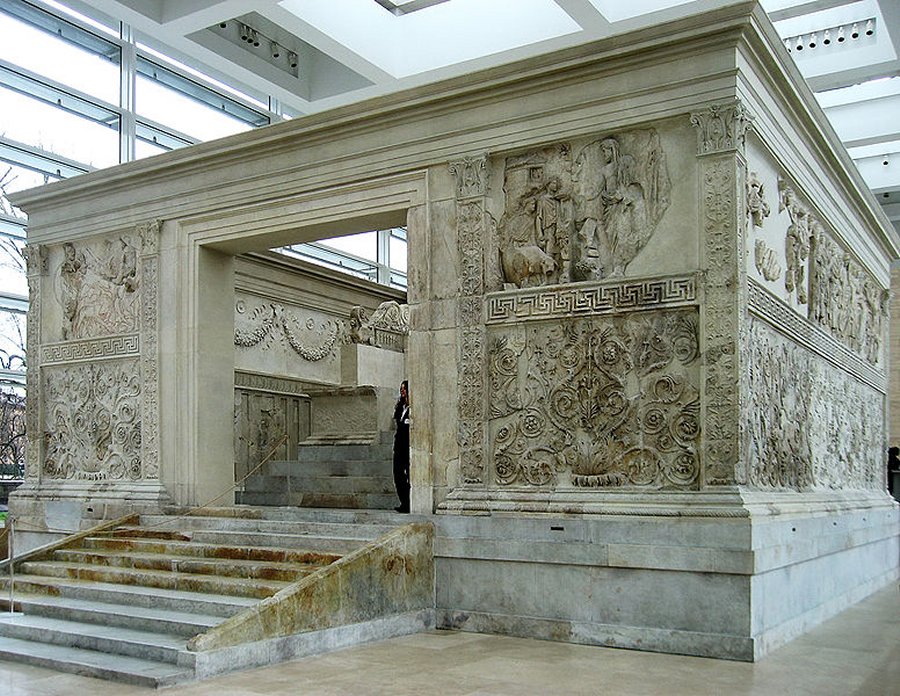 The 3 m tall altar stands on a 6 x 7 m podium is richly decorated and was consecrated on July 4, 13 BC and dedicated on January 30, 9 BC, the birthday of his wife, Livia. The U-shaped altar was inside a precinct, open to the sky with one staircase and double doors. Image credit: Manfred Heyde - CC BY-SA 3.0
The 3 m tall altar stands on a 6 x 7 m podium is richly decorated and was consecrated on July 4, 13 BC and dedicated on January 30, 9 BC, the birthday of his wife, Livia. The U-shaped altar was inside a precinct, open to the sky with one staircase and double doors. Image credit: Manfred Heyde - CC BY-SA 3.0
People had no choice; they had to live under Roman rule whether they liked it or not. They were conquered, and "the conquered were given 'Roman Peace' whether they liked it or not, and the method was through the use or threat of military force, wielded ruthlessly and savagely – Tacitus' desolation called peace," writes Adrian Goldsworthy states in his book " Pax Romana: War, Peace, and Conquest in the Roman World. "
However, the fact remains that "when Rome collapsed, Europe sank into the Dark Ages, literacy and learning all but forgotten, and there was warfare and violence of every sort where once there had been peace, " continues Goldsworthy.
Written by – A. Sutherland AncientPages.com Staff Writer
Updated on January 14, 2024
Copyright © AncientPages.com All rights reserved. This material may not be published, broadcast, rewritten or redistributed in whole or part without the express written permission of AncientPages.com
Expand for referencesReferences:
A. Goldsworthy, Pax Romana: War, Peace, and Conquest in the Roman World
More From Ancient Pages
-
 Pacific God A’a: Fascinating Polynesian Sculpture Designed To Carry A Human Skull And Bones
Archaeology | Apr 9, 2016
Pacific God A’a: Fascinating Polynesian Sculpture Designed To Carry A Human Skull And Bones
Archaeology | Apr 9, 2016 -
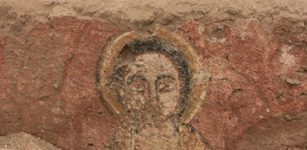 1,000-Year-Old Paintings Unearthed In Sudan – Documented By The Polish Researcher
Archaeology | Sep 25, 2022
1,000-Year-Old Paintings Unearthed In Sudan – Documented By The Polish Researcher
Archaeology | Sep 25, 2022 -
 Being A Roman Emperor Was Dangerous – Only One Of Four Died Of Natural Causes
Archaeology | Nov 12, 2021
Being A Roman Emperor Was Dangerous – Only One Of Four Died Of Natural Causes
Archaeology | Nov 12, 2021 -
 Humans In Africa Fled To The Mountains During The Last Ice Age
Archaeology | Aug 9, 2019
Humans In Africa Fled To The Mountains During The Last Ice Age
Archaeology | Aug 9, 2019 -
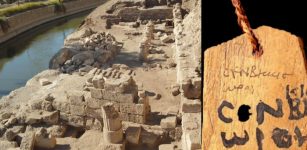 Ancient Egyptian Temple, 30 Mummy Cards, 85 Tombs And Surveillance Points From The Era Of Ptolemy IIIs Discovered In Sohag
Archaeology | May 5, 2022
Ancient Egyptian Temple, 30 Mummy Cards, 85 Tombs And Surveillance Points From The Era Of Ptolemy IIIs Discovered In Sohag
Archaeology | May 5, 2022 -
 10 Surprising Facts About The Neanderthals Who Were Not As Primitive As Previously Thought
Ancient History Facts | May 6, 2017
10 Surprising Facts About The Neanderthals Who Were Not As Primitive As Previously Thought
Ancient History Facts | May 6, 2017 -
 Surprising Discovery In Valsgärde Viking Boat Graves – Scandinavian’s Oldest Down Bedding Found
Archaeology | Mar 27, 2021
Surprising Discovery In Valsgärde Viking Boat Graves – Scandinavian’s Oldest Down Bedding Found
Archaeology | Mar 27, 2021 -
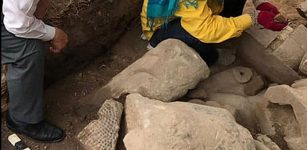 Buddha Statues With Broken Arms, Legs And Without Heads Unearthed In Angkor Wat, Cambodia
Archaeology | Apr 22, 2020
Buddha Statues With Broken Arms, Legs And Without Heads Unearthed In Angkor Wat, Cambodia
Archaeology | Apr 22, 2020 -
 Mystery Of Mexico’s Bizarre Mummy May Never Be Solved
Featured Stories | Sep 17, 2024
Mystery Of Mexico’s Bizarre Mummy May Never Be Solved
Featured Stories | Sep 17, 2024 -
 Large Pre-Columbian Pyramid Discovered Under Highway In Mexico But It Will Not Be Excavated
Archaeology | Dec 16, 2024
Large Pre-Columbian Pyramid Discovered Under Highway In Mexico But It Will Not Be Excavated
Archaeology | Dec 16, 2024 -
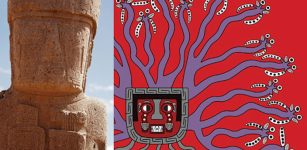 Beer And Hallucinogens Reinforced The State Of The Wari Culture
Archaeology | Jan 15, 2022
Beer And Hallucinogens Reinforced The State Of The Wari Culture
Archaeology | Jan 15, 2022 -
 Riddle Of The Indo-European Language – Which Of The Two Hypotheses Is Correct?
Featured Stories | Oct 25, 2023
Riddle Of The Indo-European Language – Which Of The Two Hypotheses Is Correct?
Featured Stories | Oct 25, 2023 -
 Prehistoric Feces At Stonehenge Reveal The Earliest Evidence For Intestinal Parasites In The UK
Archaeology | May 21, 2022
Prehistoric Feces At Stonehenge Reveal The Earliest Evidence For Intestinal Parasites In The UK
Archaeology | May 21, 2022 -
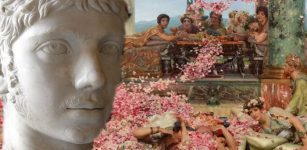 Museum Classifies Roman Emperor Elagabalus As Trans – But Modern Labels Oversimplify Ancient Gender Identities
Featured Stories | Nov 28, 2023
Museum Classifies Roman Emperor Elagabalus As Trans – But Modern Labels Oversimplify Ancient Gender Identities
Featured Stories | Nov 28, 2023 -
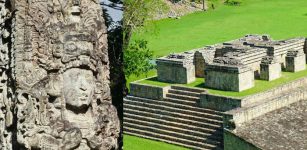 Secret Behind Ancient Durable Maya Plaster Discovered
Archaeology | Apr 21, 2023
Secret Behind Ancient Durable Maya Plaster Discovered
Archaeology | Apr 21, 2023 -
 Ruins Of Xunantunich – Mayan City That Once Flourished
Civilizations | Jan 12, 2022
Ruins Of Xunantunich – Mayan City That Once Flourished
Civilizations | Jan 12, 2022 -
 Intriguing Ancient Roman Road Discovered Under The New Town In Devon
Archaeology | Feb 7, 2023
Intriguing Ancient Roman Road Discovered Under The New Town In Devon
Archaeology | Feb 7, 2023 -
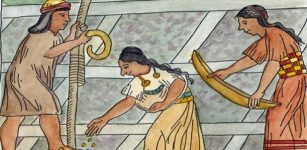 Why Was Ayllu Very Important For The Inca People?
Ancient History Facts | Feb 19, 2019
Why Was Ayllu Very Important For The Inca People?
Ancient History Facts | Feb 19, 2019 -
 Namoratunga: ‘People Of Stone’ And Ancient Astronomical Observatory
Featured Stories | Jun 12, 2016
Namoratunga: ‘People Of Stone’ And Ancient Astronomical Observatory
Featured Stories | Jun 12, 2016 -
 Prehistoric Legacy Of The Mysterious Burnt City
Civilizations | Jan 22, 2021
Prehistoric Legacy Of The Mysterious Burnt City
Civilizations | Jan 22, 2021

